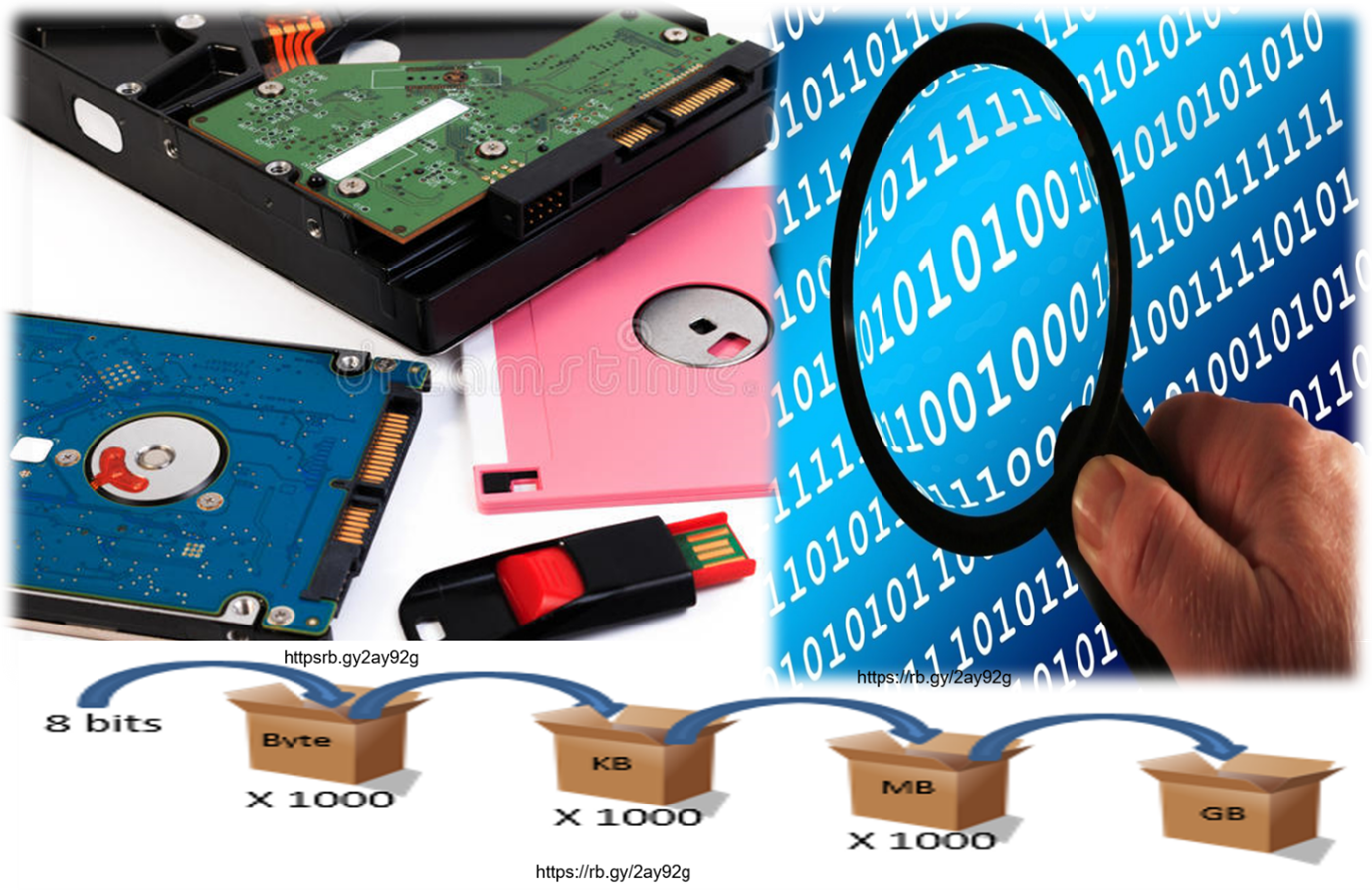
305230_Bacarri National Trade-Agricultural School-Main_ICT-CSS9_Quarter 2_Module 1: Select Measuring Instruments
This module contains topic and activities on Select Measuring
Instruments to be used by the Grade 9 Technical Vocational Livelihood students
under ICT-CSS track for the 2nd Quarter, Week 1.
After accomplishing this module, you must be able to:
Ø Identify object/s or component to be measured
Ø Obtain correct specifications from relevant source
Ø Select measuring tools in line with job requirements

318915_Sablan National High School-Balluay Extension_Health 7_Quarter2_Module 1: Nutrition during Adolescence
This module highlights the importance of attaining holistic health. It also focuses on the need to develop all dimensions of one’s health. Correct health information, a positive attitude, healthy practices will be discussed to help you attain and maintain holistic health.
In addition, you will be exposed to activities that will help you develop/practice different life skills, such as critical thinking skills and decision- making skills to cope with changes during adolescence. The module is divided into two lessons, namely:
Lesson 1 – Healthy foods for adolescents
Lesson 2 – Other Essential Nutrients and its functions
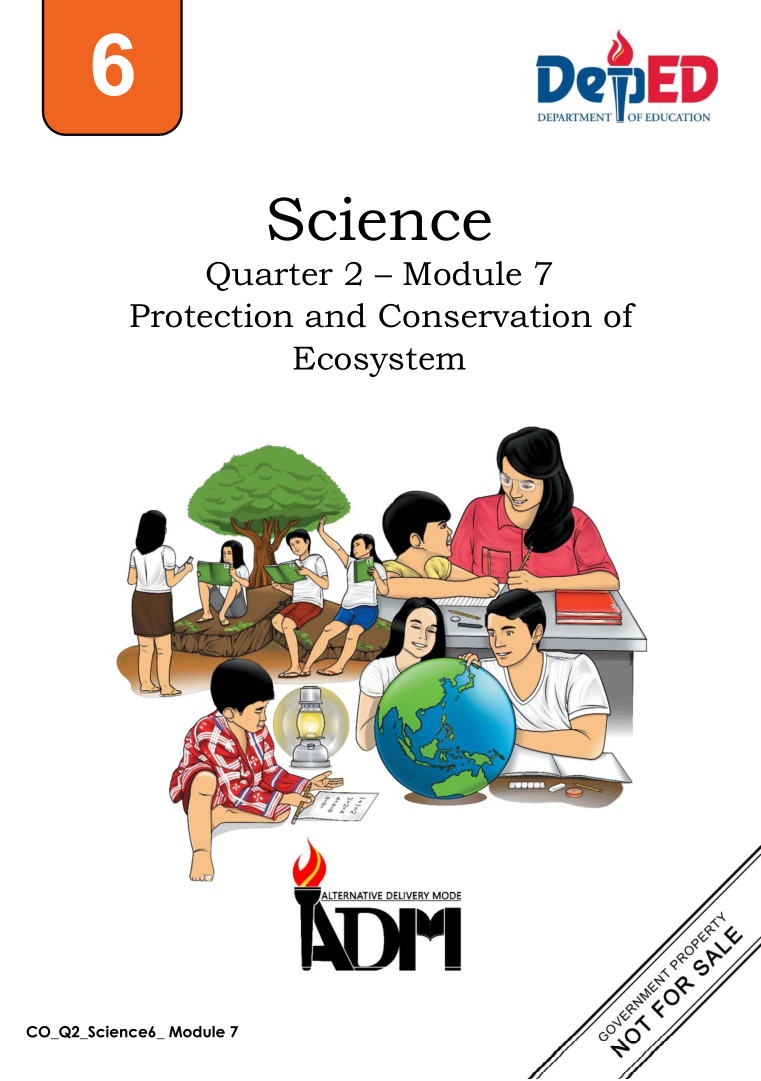
502117-San Jose Integrated School-Science 6-Quarter 2-Module 7 : Protection and Conservation of Ecosystem
This module was designed and written with you in mind. It is here to help you master the ways on how to protect and conserve the tropical rainforests, coral reefs and mangrove swamps. The scope of this module is used in many different learning situations. The language used recognizes the diverse vocabulary level of students. The lessons are arranged to follow the standard sequence of the course.

135594-Camilo Lucaben Elementary School-Math 4-Quarter 1-Module 1:visualizes numbers up to 100 000 with emphasis on numbers 10 001–100 000
This module is intended to help you to understand the concepts of visualizing numbers up to 100 000, give the
place value of a digit in numbers up to 100 000, and read and write
numbers in symbols and in words and compare them using relation
symbols.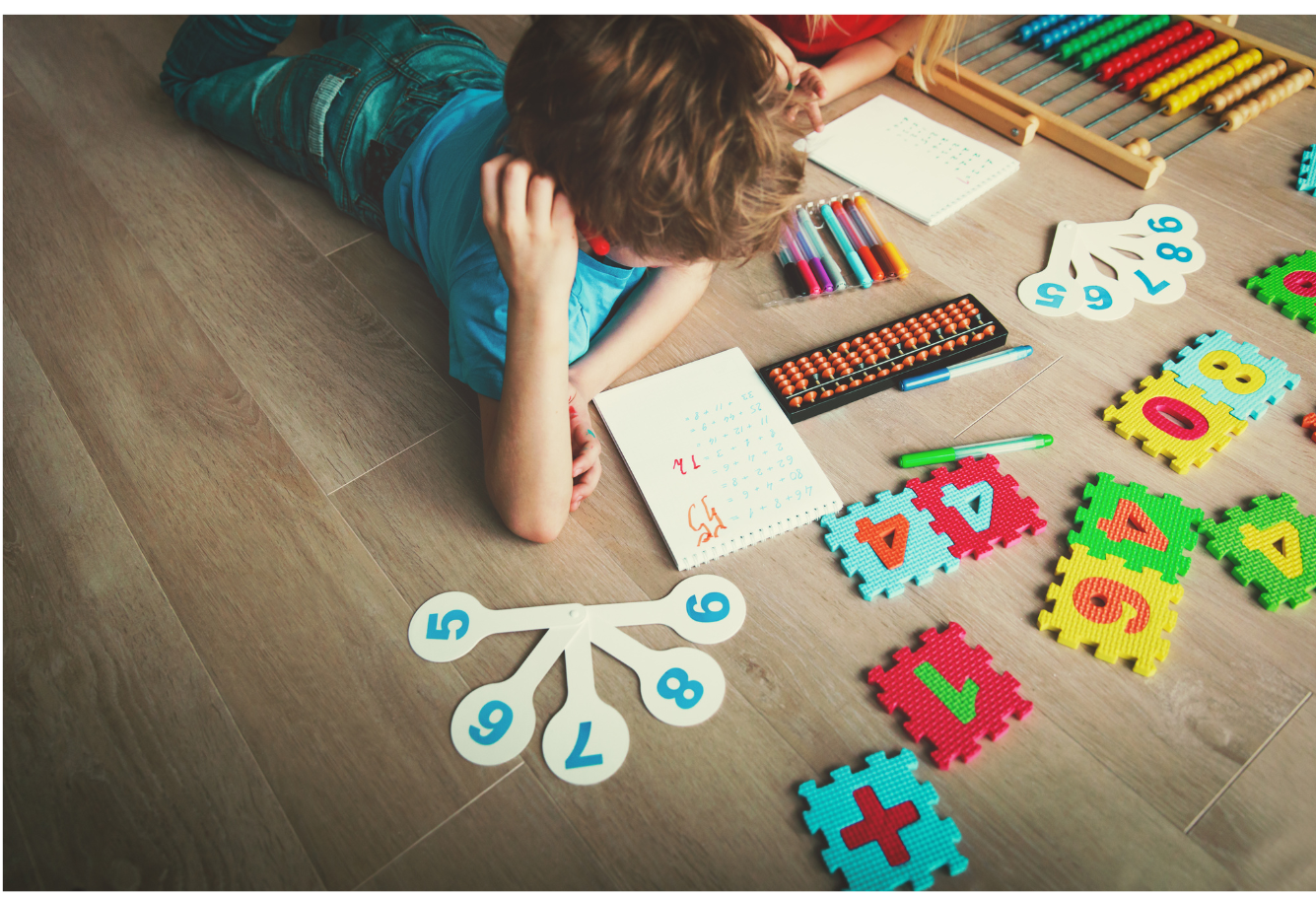
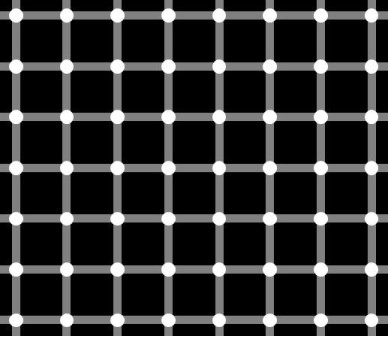
305147_Kapangan Central National High School_Mathematics_8_Quarter 4_Module 3_Parallelism and Perpendicularity
This module was designed and written with you in mind. Primarily, it aims for you to be able to learn about parallel and perpendicular lines.
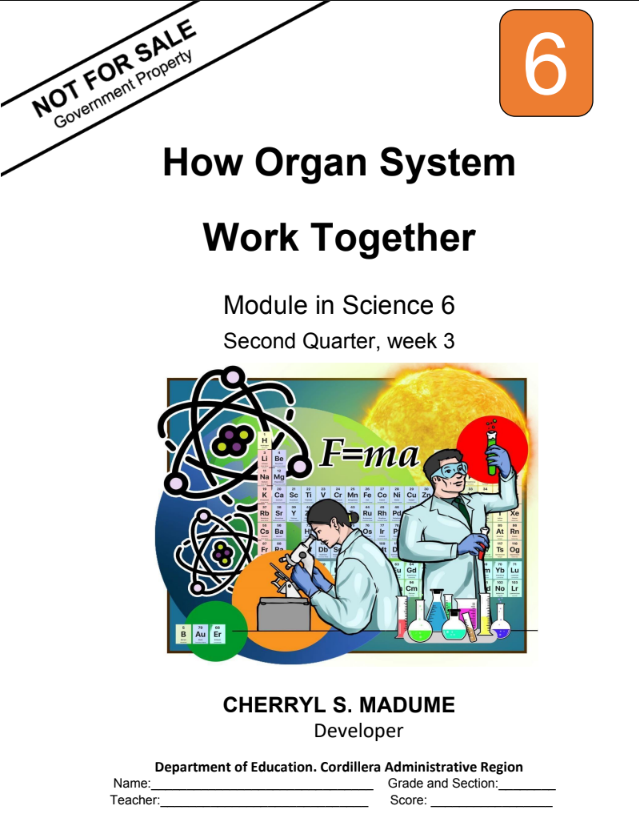
136389_San Carlos Heights Elementary School_Science_6_Quarer 2_Module 3:How Organ System Work Together
Do you know how these organ systems work together? What enables children like you to do different kinds of activities? What enables you to breathe , smell the freshness of air, and adapt to the different conditions around you?
This module will help you find the answers to these questions. There will be exciting activities prepared for you such as puzzles, games and many more to help you understand our lesson much better. Have fun and enjoy learning this lessons:
Learning Objectives
● Explain how organ systems work together.● Give the function of each organ in the body.
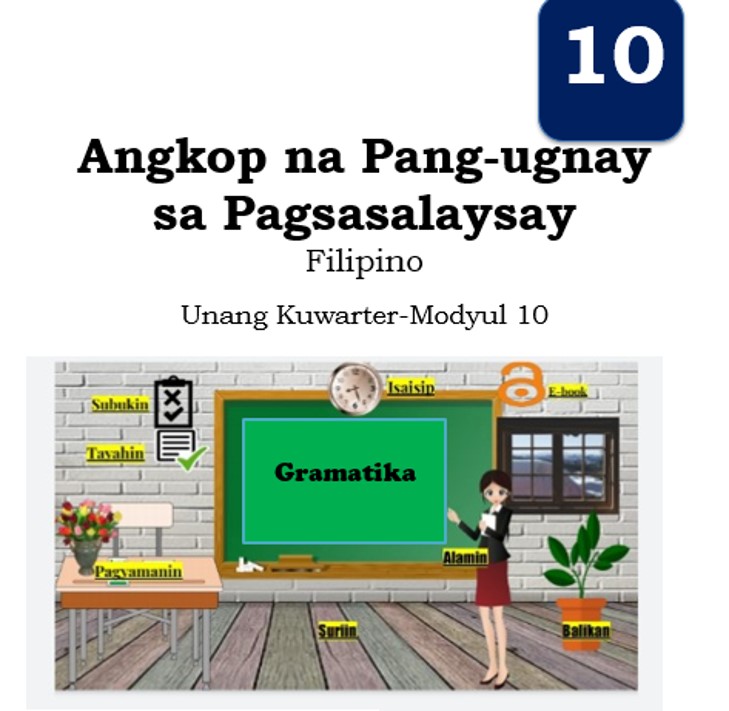
305166_Aguinaldo National High School_Filipino 10_Quarter 1_Module 10:Angkop na Pang-ugnay sa Pagsasalaysay
Ang modyul na ito ay naglalaman ng mga impormasyon at halimbawa ng mga pang-ugnay na ginagamit sa pagsasalaysay. Naglalaman din ito ng mga pagsubok at gawain na kailangan mong isakatuparan upang malinang at mataya ang iyong natutunan sa aralin.

Grade 5: Q4_Science (Judy Ann K. Bolayo) copy 1
Science 5 Quarter 4 involves the field of Earth Science such as Geology (Rocks and Soil), Meteorology (Weather Patterns) and Astronomy (Moon and Stars).

136400_Doña Aurora Elementary School_English_1_4th Quarter_Module 2_Describing Words
This module is intended to help you identify or recognize describing words for people, objects, things and places. It is designed to equip you with essential knowledge and skill in recognizing describing words.

305151-Lepanto National High School-Cookery 9-Quarter 4-Module 1: Prepare Desserts
In this course, you'll learn why desserts are so important and discover the many types of desserts and what makes each one special.
We'll explore delicious treats like cakes, cookies, puddings, and more! You'll learn how to identify different desserts and understand their unique characteristics, like texture, flavor, and sweetness.
Get ready to satisfy your sweet tooth while gaining valuable cooking skills. Let's dive into the wonderful world of desserts together!
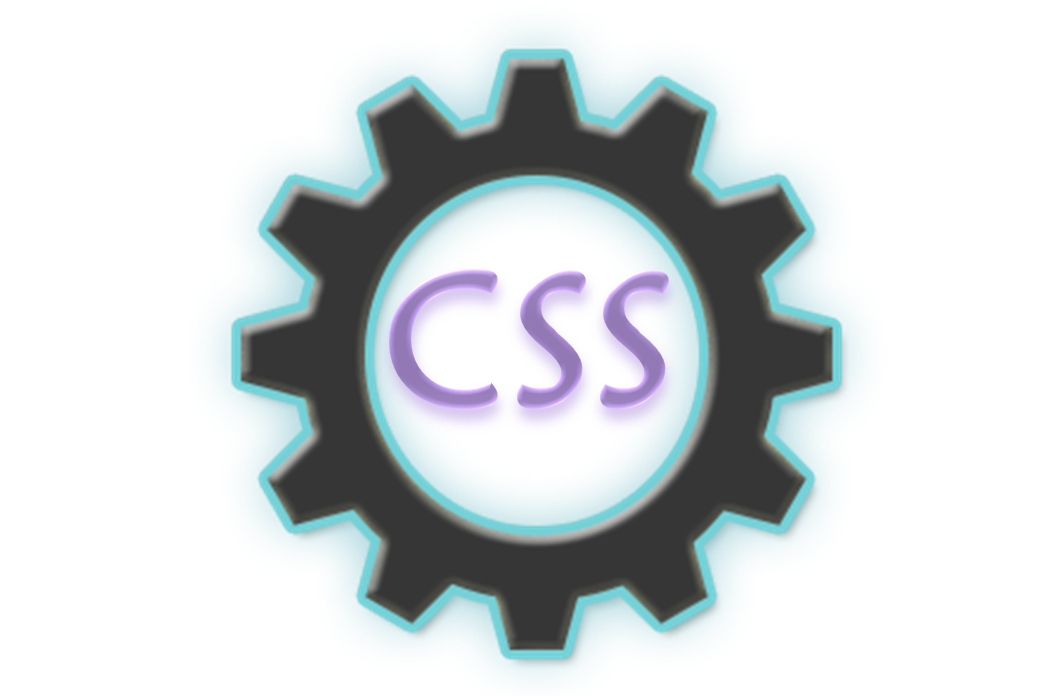
305238-Betwagan National High School-TLECSS 7-Quarter 1-Module 1: Using and Maintaining Hand Tools
Hello learner!
This course is your first module for TLE-ICT-CSS 7. It is all about how to USE and MAINTAIN HAND TOOLS (UHT). From this module, you will be learning the following competencies:
Learning Outcome 1 - Plan and prepare tasks to be undertaken. (TLE_IACSS9-12UHT-IIIa-17)
Learning Outcome 2 - Prepare hand tools.(TLE_IACSS9-12UHT-IIIb-18)
Learning Outcome 3 - Use appropriate hand tools and test equipment. (TLE_IACSS9-12UHT-IIIc-19)
Learning Outcome 4 - Maintain hand tools. (TLE_IACSS9-12UHT-IIId-20)
Buckle Up! You can do it! Surely, You will learn a lot from this lesson.

136073-LIWAN WEST ELEMENTARY SCHOOL - FILIPINO 5 -QUARTER 4- MODULE 7:Pagsulat ng Maikling Balita, Editoryal at iba pang Bahagi ng Pahayagan
Pagsulat ng Maikling Balita, Editoryal at iba pang Bahagi ng Pahayagan
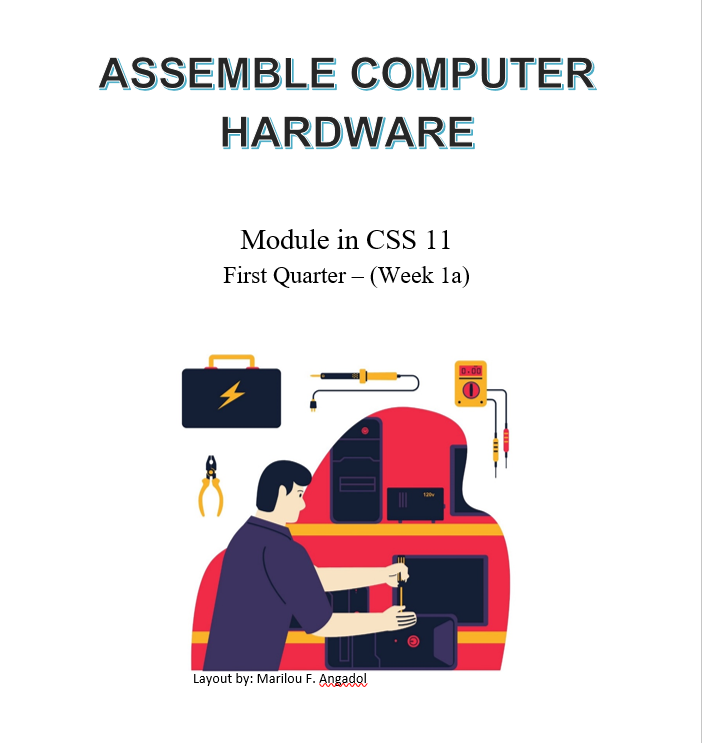
305267_Tadian School of Arts and Trades_TVL-ICT-CSS_Grade 11_Quarter 1_Module 1:Assemble COmputer Hardware
This module was designed with you in mind. It is here to help you gain knowledge and skill in one of the core competency of the course Computer Systems Servicing, specifically, assembling a computer. The lessons were arranged to follow the standard sequence of the course. However, the order in which you read them can be changed to corresponds with the textbook or other learning material you are using now.
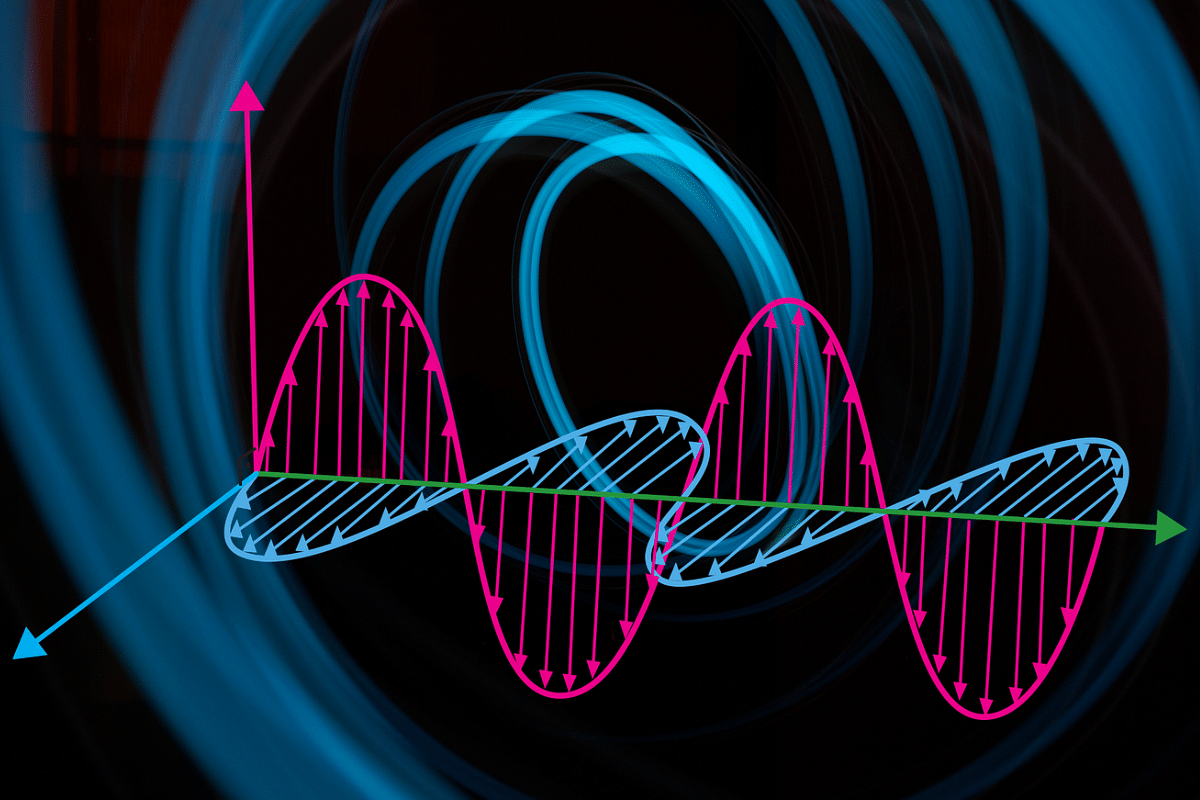
305161-Taloy Sur National High School-Science 10-Quarter 2-Module 1: Electromagnetic Waves
Electromagnetic radiation is all around us. Some are unnoticeable, yet a lot of our activities make use of these electromagnetic waves. Let us explore these electromagnetic waves as we go through this course.
135748-Damag Elementary School-Mother Tongue 2-Quarter 1-Module 14-Following Instructions in a Test Carefully
In this course, you are going to learn how to follow instructions in answering a test carefully.
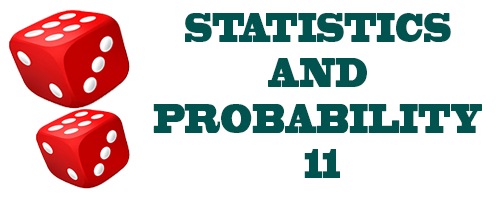
302446-Alimodian National Comprehensive High School-Statistics and Probability-Grade 11-Quarter 3-Module 3:Values of a Random Variable
A random variable is a set of possible values from a random experiment. We use a capital letter, like X, Y, or Z to avoid confusion with the variables used in Algebra or we can use any letter in the alphabet.
A random variable has a probability distribution (will be discussed in the next activity sheet) that represents the likelihood that any of the possible values would occur. Let’s take for example that the random variable, X, is the number on the top face of a die when it is rolled once. The possible values for X will be 1, 2, 3, 4, 5, and 6. Another classic example of a random variable is the outcome of tossing a coin. We consider a probability distribution in which the outcomes of a random event are not equally likely to happen. If random variable, Z, is the number of tails we get from tossing three coins, then Z could be 0, 1, 2 or 3. This means that we could have no tails, one tail, two tails or three tails on a three-coin toss.
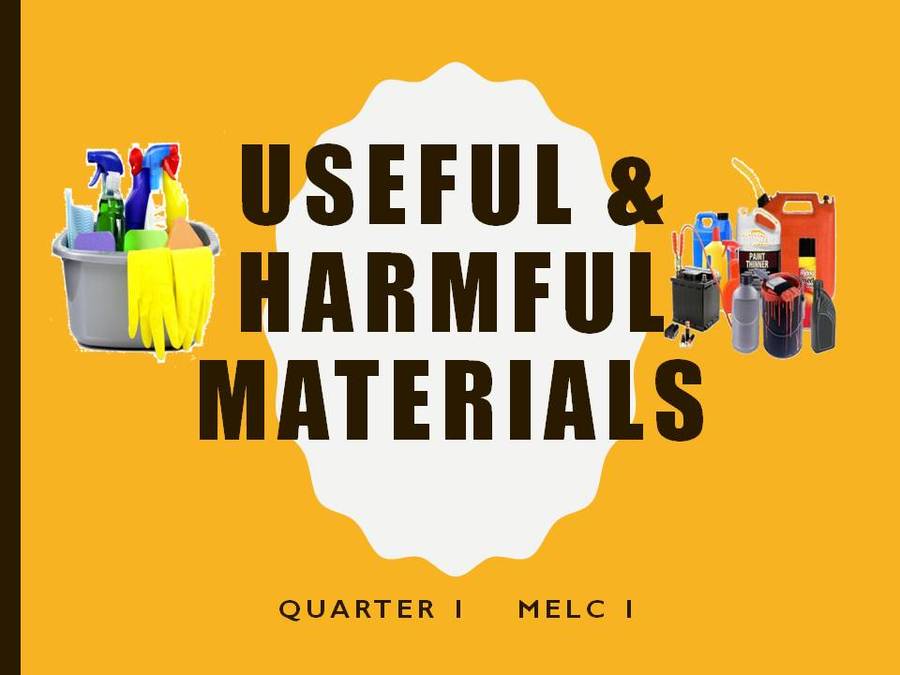
136389-San Carlos Heights Elementary School-Science 5-Quarter 1-Module 3:Useful and Harmful Materials
In this course , you are going to classify and describe useful and harmful materials used at home. The four useful materials at home are metals, plastics, wood and textiles.
Harmful materials include corrosive, flammable, explosive, poisonous and reactive materials. Since you are going to classify useful and harmful materials, you are going to prepare materials readily available at home and in the community. You can ask your parents, guardians, brothers or sisters or facilitators to guide you through this course.

302446-Alimodian National Comprehensive high School-Statistics and Probability-Grade 11-Quarter 3-Module 2:Discrete and Continuous Random Variable
A random variable’s possible values might represent the possible outcomes of a yet-to-be-performed experiment, or the possible outcomes of a past experiment whose already-existing value is uncertain (for example, as a result of incomplete information or imprecise measurements). They may also conceptually represent either the results of an “objectively” random process (such as rolling a die), or the “subjective” randomness that results from incomplete knowledge of a quantity.
Random variables can be classified as either discrete (that is, taking any of a specified list of exact values) or as continuous (taking any numerical value in an interval or collection of intervals). In probability and statistics, the mathematical function describing the possible values of a random variable and their associated probabilities is known as a probability distribution.
Discrete random variables are variables whose values are obtained by counting. These are variables that can take on a finite number of distinct values.
For example, you can count the number of the students in a section. You can count the Covid-19 patients in a hospital.
Continuous random variables are variables whose value are obtained by measuring. These are random variables that take an interminably uncountable number of potential values, regularly measurable amounts.
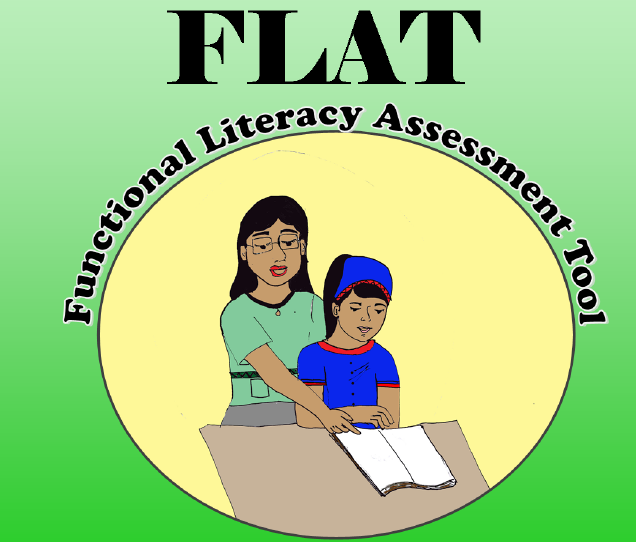
FLAT
Assessing your learners’ reading level is integral to effective reading
instruction. Hence, you must be acquainted with the performance levels of your
learners in reading literacy to help you develop and deliver appropriate
reading lessons addressing the needs of your learners.
The development of the Functional Literacy Assessment Tool (FLAT) is
geared towards helping you conduct effective and efficient literacy assessment,
specifically functional literacy. The FLAT also serves as your guide in
developing lessons and resource materials specially designed to cater to your
learners’ reading levels. Functional literacy is defined as the ability to read
through the FLAT to the story or the local material and answer retrieval
questions about the story or material as accurately as possible. This is an
essential literacy skill the learners need to do everyday tasks.
The FLAT aims to help teachers identify the learners’ literacy levels so
they will be able to provide effective remediation.
To
the Teachers:
You are now holding the FLAT Teacher’s Guide which is designed to help
you conduct the reading assessment effectively and efficiently. Your role as a
teacher is crucial to the successful conduct of this reading assessment because
the FLAT requires your knowledge and expertise.
The FLAT is composed of different materials and rating scales used to
measure the attainment of the desired reading test competencies per grade
level. This is a ladderized assessment tool; thus, every phase of the
assessment should be followed strictly. You may proceed to the succeeding
levels until you can determine the functional level the child has achieved with
ease. You need to explain to the learners that the results of the FLAT
assessment will not affect their grades.
For a better understanding of what FLAT is all about, you may refer to
the Glossary of Terms on page 17 as it elaborates the salient points of this
tool.

302446-Alimodian National Comprehensive High School-Statistics and Probability-Grade 11-Quarter 3-Module 1-Random Variable
As previously learned in Junior High School lessons, there are lots of wonders in nature or in real-life, like tossing a coin or rolling a die, whose outcomes cannot be predicted with certainty in advance, but the set of all the possible outcomes is known. These are what we call as random phenomena or random experiments.
A random experiment is a mechanism that produces a definite outcome that cannot be predicted with certainty. The set of all possible outcomes of an experiment is called the sample space. The sample space associated with a random experiment is the set of all possible outcomes. An event is a subset of the sample space.
Remember that a variable is a characteristic or attribute that can assume different values. We use capital letters to denote or represent a variable. A variable X whose value depends on the outcome of a random process is called a random variable. A random variable is a variable whose value is a numerical outcome of a random phenomenon. It is a capacity that connects a real number with every component in the sample space. It is a variable whose qualities are controlled by chance. In this manner, a random variable is a numerical amount that is derived from the results of an arbitrary trial or experiment.
A random variable can be discrete or continuous.
Discrete Random Variables are variables that can take on a finite number of distinct values.
Continuous Random Variables are random variables that take an interminably uncountable number of potential values, regularly measurable amounts.